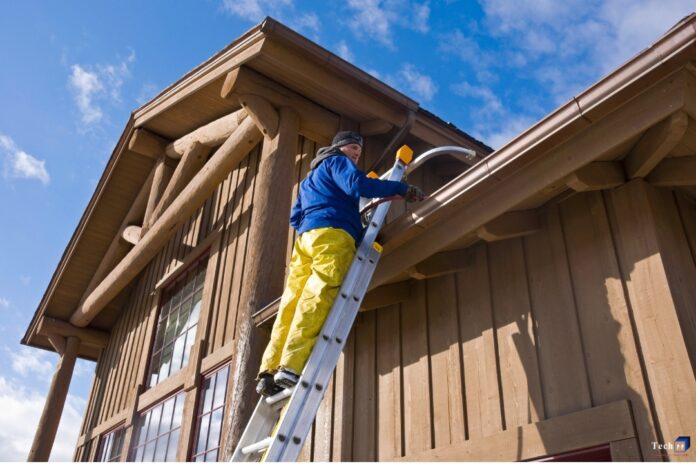Maintain your home’s gutters is a vital part of preserving the structural integrity and appearance of your property. Gutters play a crucial role in managing rainwater by channeling it safely away from your roof, walls, and foundations. When gutters are neglected, problems such as water damage, dampness, mould growth, and even foundation issues can quickly arise.
But how often should ultimate clean solutions clean and maintain your gutters? What are the best ways to keep them in good working order? In this comprehensive blog, we will explore the recommended regularity for gutter maintenance and share practical, effective methods to care for your gutters throughout the year.
How Often Should You Maintain Your Gutters?
The frequency of gutter maintenance depends on several factors including your property’s location, surrounding vegetation, the type of gutters, and the local weather patterns. However, general guidelines can help most homeowners plan their gutter care routine.
Twice a Year is the Minimum Standard
Most experts agree that gutters should be cleaned and inspected at least twice a year, ideally in:
- Spring (March to May): This helps clear out any debris accumulated over winter such as leaves, twigs, and dirt, as well as moss and algae growth encouraged by damp conditions.
- Autumn (September to November): With many trees shedding leaves in autumn, this is the most critical time to prevent blockages before the wetter winter months.
Cleaning gutters twice yearly reduces the risk of blockages and water overflow, which can cause damage to your home’s exterior and interior.
More Frequent Cleaning May Be Needed
Certain conditions might require you to clean gutters more frequently:
- If you have overhanging trees: Properties surrounded by deciduous trees, pine trees, or conifers may experience faster leaf and needle buildup, increasing blockages.
- After storms or heavy winds: Storms can blow additional debris into gutters.
- If you notice water overflow or slow drainage: These signs indicate blockages or damage needing immediate attention.
- In areas with lots of birds or wildlife: Nests and droppings can clog gutters and damage seals.
In such cases, quarterly or even monthly checks might be necessary to keep gutters functioning optimally.
Methods to Maintain Your Gutters
Maintaining gutters involves more than just cleaning out debris. Here are some effective ways to keep gutters in excellent condition year-round:
1. Regular Cleaning of Debris
The most straightforward and essential task is removing leaves, twigs, moss, and dirt that accumulate in gutters. You can:
- Use a sturdy ladder to access gutters safely.
- Wear gloves and scoop out debris with a small garden trowel or gutter scoop.
- Flush gutters with a hose to clear remaining dirt and check water flow.
- Ensure downpipes are free-flowing and clear blockages using a plumber’s snake or pressure hose.
Professional gutter cleaners often have specialised vacuum tools that remove debris safely without damage, especially on high or hard-to-reach gutters.
2. Inspecting for Damage and Wear
During cleaning, inspect gutters carefully for:
- Cracks, holes, or rust spots.
- Loose or missing brackets and fasteners.
- Damaged or deteriorated rubber seals.
- Blocked or leaking joints.
- Signs of sagging or improper slope.
Early detection of such issues allows timely repairs, preventing leaks and water damage. Minor problems like loose brackets can often be fixed with basic tools and replacement parts.
3. Clearing and Maintaining Downpipes
Gutters are only effective if the water drains properly through downpipes. Blocked downpipes cause water to back up, leading to overflow and damage. Regularly check downpipes for:
- Debris, nests, or bird droppings.
- Blockages near the base of the downpipe.
- Signs of corrosion or cracks.
Use a hose or plumber’s snake to clear blockages. If necessary, replace damaged sections to ensure smooth drainage.
4. Installing Gutter Guards or Leaf Guards
If you’re tired of frequent gutter cleaning, consider installing gutter guards or leaf guards. These mesh or plastic covers fit over gutters and prevent most leaves and debris from entering, while still allowing water to flow freely.
Benefits include:
- Reducing cleaning frequency significantly.
- Preventing blockages and overflow.
- Helping avoid pest infestations by blocking access.
Keep in mind, guards still require occasional inspection and cleaning, especially after storms or heavy leaf fall.
5. Regularly Check Roof and Surrounding Trees
Maintaining gutters also means looking upward and around your property:
- Trim back overhanging branches: Prevent leaves and twigs from falling into gutters.
- Inspect roof tiles or shingles: Damaged roofing materials can lead to debris falling into gutters and increase water damage risks.
- Clear moss and algae on roof: This reduces debris and water runoff issues.
Healthy roofs and surroundings contribute to gutter longevity and effective drainage.
6. Use Protective Coatings and Sealants
Older metal gutters may develop rust, cracks, or leaks over time. Regularly applying protective coatings such as:
- Bitumen paint or waterproof sealants can extend gutter life.
- Replacing worn rubber seals at joints prevents leaks.
- Using gutter putty to seal minor cracks.
These maintenance techniques help prevent costly repairs or premature gutter replacement.
Why Regular Gutter Maintenance Matters
Regular gutter maintenance is more than a chore—it’s an investment in your home’s protection and value. Neglected gutters can cause:
- Water damage to walls and foundations: Overflowing water can erode soil and damage masonry.
- Damp and mould issues: Blocked gutters encourage water ingress causing unhealthy mould growth.
- Structural damage: Long-term water pooling leads to wood rot and compromised building materials.
- Pest infestations: Stagnant water attracts mosquitoes and rodents.
- Ice dams in winter: Blocked gutters worsen ice buildup, damaging roofs.
Regular maintenance ensures gutters function properly, protecting your home against these costly issues.
When to Call Professionals
While minor gutter cleaning can be a DIY project, certain situations require professional help:
- High or difficult-to-access gutters.
- Persistent leaks or damage needing repairs.
- Installing gutter guards.
- Comprehensive inspection and maintenance services.
Professionals bring experience, tools, and safety knowledge that reduce risk and improve results.
Conclusion
The regularity and methods of gutter maintenance depend largely on your home’s environment and roof surroundings, but twice yearly cleaning combined with regular inspections is a solid rule of thumb for most UK homeowners. Clearing debris, inspecting for damage, maintaining downpipes, installing guards, and applying protective coatings all contribute to long-lasting, effective gutters.
By prioritising gutter maintenance, you protect your property from water damage, extend the life of your gutters, and save yourself from expensive repairs. Whether you choose to maintain gutters yourself or hire a professional, regular care is essential for a healthy, well-functioning home.


